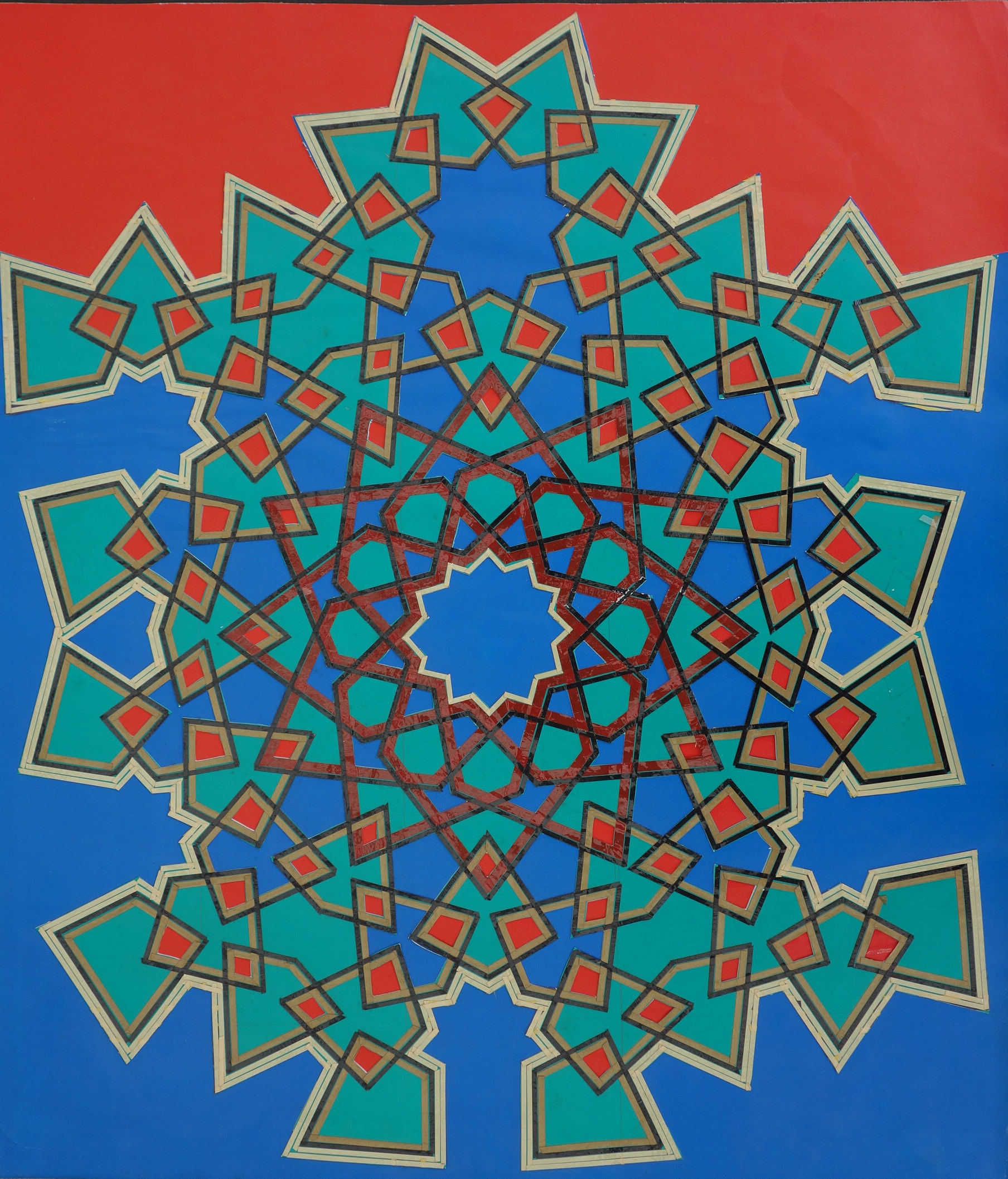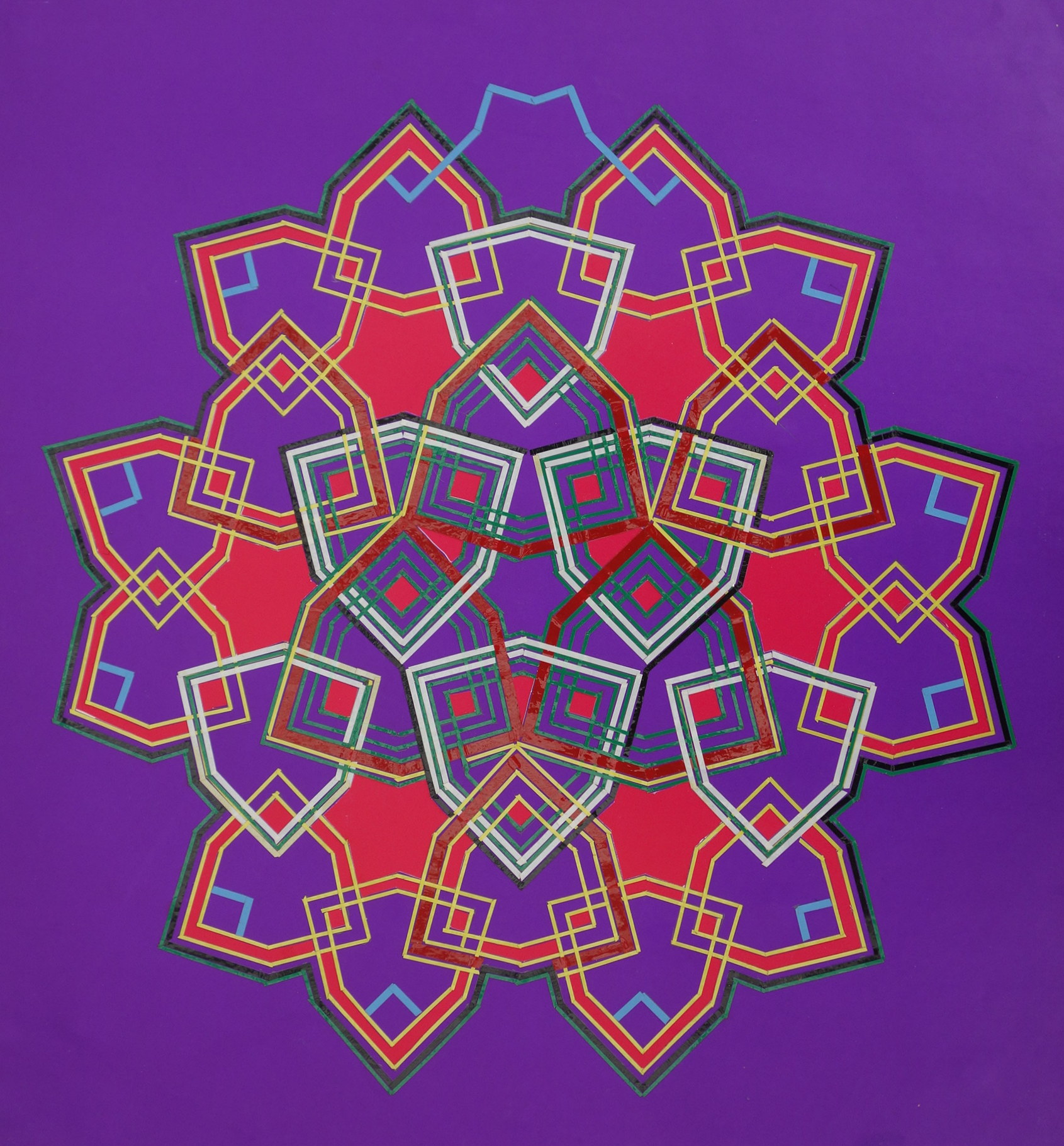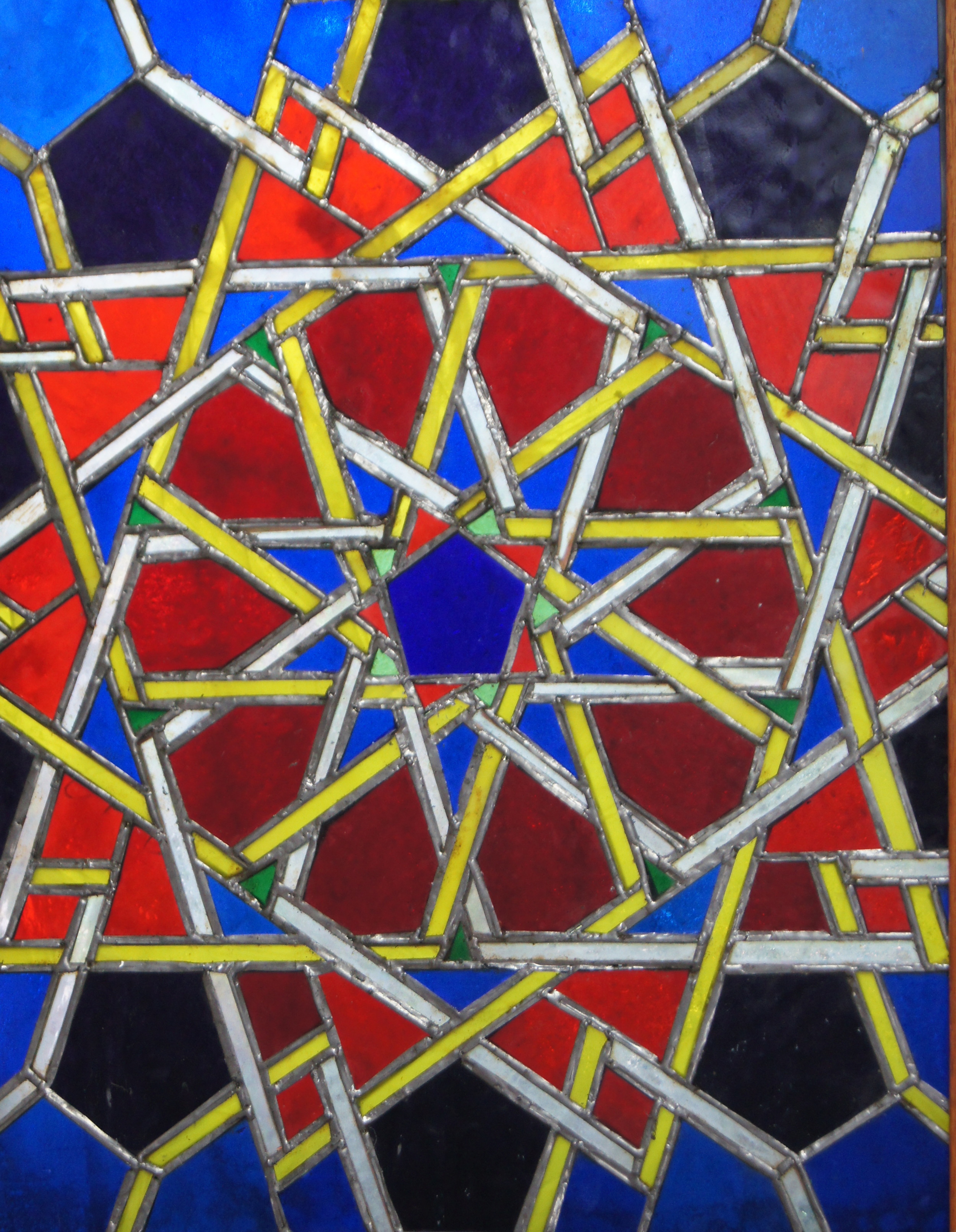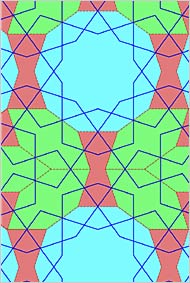The stained glass pieces, some works on paper and a few oil paintings from the late 1970s are highly influenced by tiles I had seen in New York at the Hispanic Museum, by works I had seen in the Islamic Section of the Metropolitan Museum of Art and finally by Keith Critchlow's book 'Islamic Patterns an analytical and cosmological approach.' I had seen the book in the 1970's and absolutely enjoyed studying it. It presents a world that can be created with a compass and ruler. The key is using a compass to divide a circle. A short introduction to Islamic patters is also available through an article in the NY Times of Tuesday, February 27th, 2007 - 'In Medieval Architecture, Signs of Advanced Math http://www.nytimes.com/2007/02/27/science/27math.html.
#1 -Circles divided by 9 I emphasized the vertical aspect of the figure and using lines and colors I bring certain things out in relief. The work is made of a few sheets of Pantone paper one, on top of the other. I cut out certain shapes letting the paper in the background be visible. The lines are done with various shapes of tape.
#2 - The work is on paper, 50 x 58cm, 19 3/4 x 22.5 inches. All similar works are the same size they are done on Pantone colored paper.
#3 - Five and Ten - the name in this case is serious.
This work, done with stained glass is about a circle divided into ten parts, count the red pieces, and there is the pentagon in the center, as well as the repeating dark purple pentagons around. They look black in this photo but when the sun comes in they do look purple.
#4 - Is a drawing from the mentioned NY Times article. The colors are used to emphasize shapes made by the lines. Where the colors are placed is rather arbitrary, the artist uses them to take the eye someplace or to create a large pattern.




